You can make delicious vinegar-free pickles using three simple brine methods. The basic salt brine uses 7 grams of salt per cup of water, creating a classic fermented pickle. For an herbal twist, try combining fresh dill, garlic, and aromatics with a salt solution for a traditional kosher-style pickle. If you prefer heat, the spicy garlic brine incorporates whole garlic cloves, jalapeños, and optional gochugaru pepper flakes for an extra kick. Each method relies on natural lacto-fermentation to develop tangy, probiotic-rich flavors while keeping your vegetables crisp. These time-tested techniques reveal countless possibilities for creating your perfect pickle.
Basic Salt Brine Method
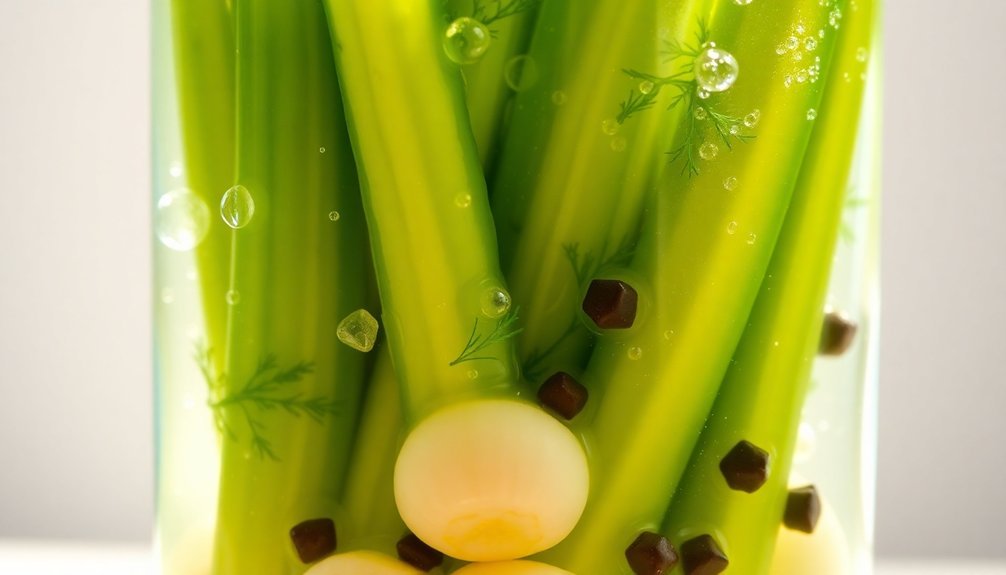
Keep your vegetables submerged using weights or a water-filled zip-lock bag.
Cover the jar loosely to allow gases to escape during fermentation.
Mix 7 grams of salt per cup of water to create your brine.
Place the jar in a pan to catch any overflow, and keep it at room temperature away from direct sunlight.
You'll need 3-5 days for half-sour pickles or up to 21 days for full-sour results.
Dill and Herb Brine
With fresh dill as your foundation, this classic brine combines aromatic herbs and garlic to create naturally fermented pickles without vinegar. You'll need small cucumbers like Kirby or Persian varieties, fresh dill sprigs, garlic cloves, kosher salt, and a touch of sugar to balance the flavors.
The preparation is quick and easy, taking only 10-15 minutes total.
Start by thoroughly cleaning your cucumbers and cutting them into your preferred shapes. While you're preparing the vegetables, sterilize your Mason jars using boiling water or a dishwasher cycle.
Remove the dill from its thick stems and smash or slice your garlic cloves to release more flavor. Layer these ingredients in your sterilized jars, making sure to distribute them evenly.
If you're looking to avoid vinegar, you've got several options. You can use lemon or lime juice for acidity, or let natural fermentation create the tangy flavor you're after. Citric acid also works as a direct substitute.
Once you've added your chosen acidic element, store your pickles in the refrigerator. They'll need at least 24 hours to develop their flavor, and they'll keep for 2-3 months when properly stored.
Remember to keep the cucumbers fully submerged in the brine.
Spicy Garlic Fermented Pickles
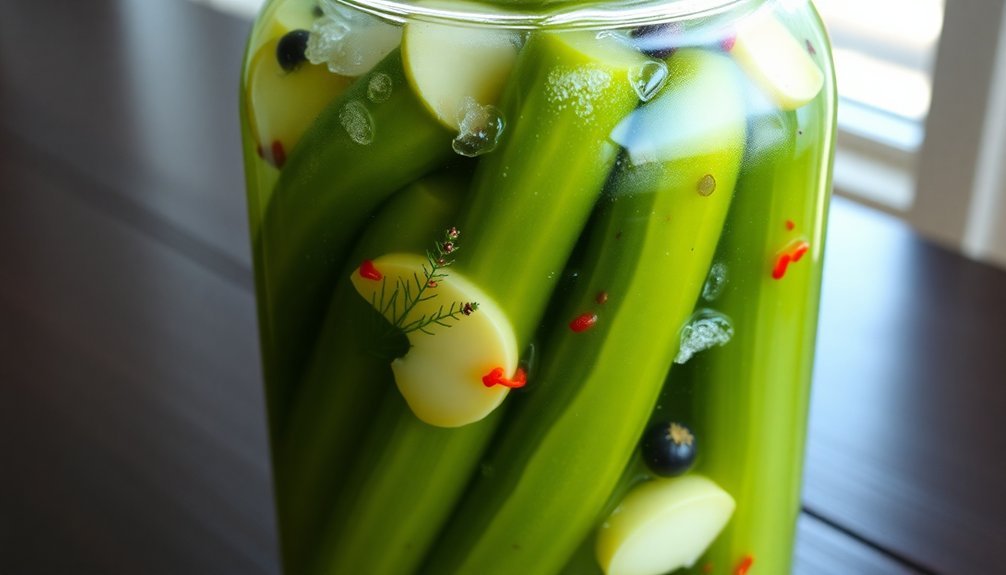
Spicing up your fermented pickles with garlic creates a bold, complex flavor that's impossible to resist. You'll need organic pickling cucumbers, whole garlic cloves, unrefined salt, and your choice of spicy peppers like jalapeños or habaneros. For extra heat, consider adding gochugaru red pepper flakes or fresh ginger.
Start by washing your cucumbers and removing their blossom ends to maintain crispness. After soaking them in an ice bath, slice or spiral cut them as desired. Prepare your garlic by slicing or smashing the cloves, then mix your salt brine using filtered water. The lacto-fermentation process naturally enhances both flavor and texture while introducing beneficial probiotics.
Pack your jar with cucumbers, garlic, and spices, leaving headroom at the top
- Pour the salt brine over everything, guaranteeing complete submersion
- Add fermentation weights to keep ingredients below the brine
- Cover loosely to allow gases to escape during fermentation
Monitor your fermentation daily in a cool, dark place, releasing pressure as needed. You'll want to catch any overflow by placing a plate underneath the jar.
Remember to use sterile equipment and clean hands throughout the process to prevent contamination and guarantee successful fermentation.
Frequently Asked Questions
Can I Reuse the Brine From a Previous Batch of Fermented Pickles?
You shouldn't reuse fermented pickle brine for new batches, as it's risky. While the old brine contains beneficial bacteria, it's depleted of necessary nutrients and may not properly ferment your new vegetables.
Why Did My Pickles Turn Soft Instead of Staying Crunchy?
Your pickles may have turned soft because you've used too little salt, stored them in warm conditions, or didn't remove the blossom ends. Fresh, firm cucumbers and proper salt measurements are key to crunchy results.
Is Cloudy Brine Normal During the Fermentation Process?
Yes, you'll find that cloudy brine is completely normal and actually desirable during fermentation. It's a sign that beneficial bacteria are doing their job, converting sugars to lactic acid and preserving your vegetables.
What's the Maximum Time I Can Store Fermented Pickles in Refrigeration?
You can store your fermented pickles in the refrigerator for 4-6 months typically. While they might last longer, you'll notice quality changes. It's best to trust your senses and replace them when texture softens.
Can I Mix Different Vegetables in the Same Jar While Fermenting?
Yes, you can mix different vegetables in the same jar. Just make sure they have similar fermentation times and are cut to similar sizes. You'll want to pack them tightly and keep them submerged.
In Summary
You'll find these vinegar-free brines offer a fresh take on traditional pickling. Whether you've chosen the basic salt brine, fragrant dill and herb mix, or zesty garlic fermented version, you're now equipped to create crisp, flavorful pickled vegetables. Don't limit yourself to cucumbers – try carrots, radishes, or green beans. Once you've mastered these simple brines, you'll never go back to store-bought pickles again.

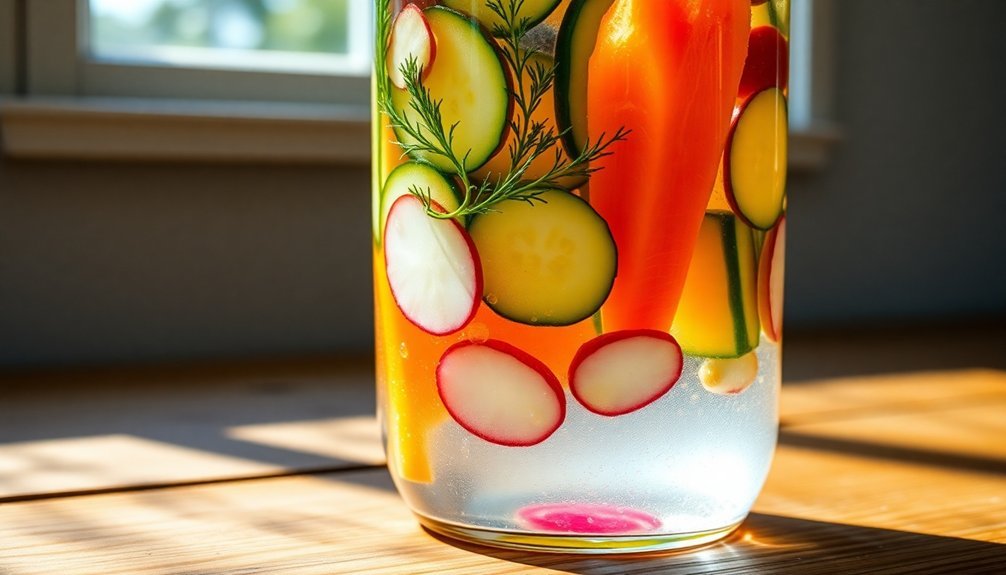
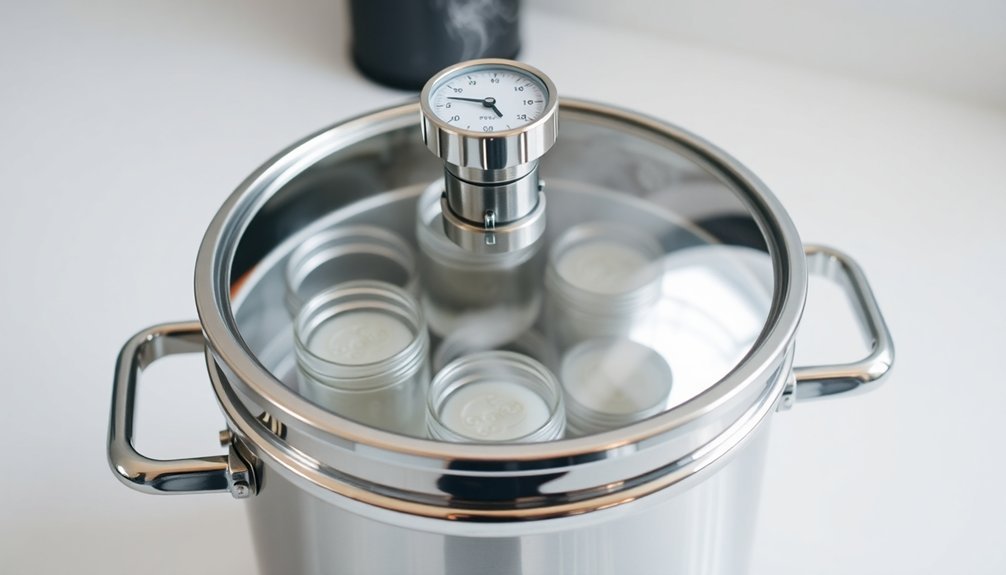
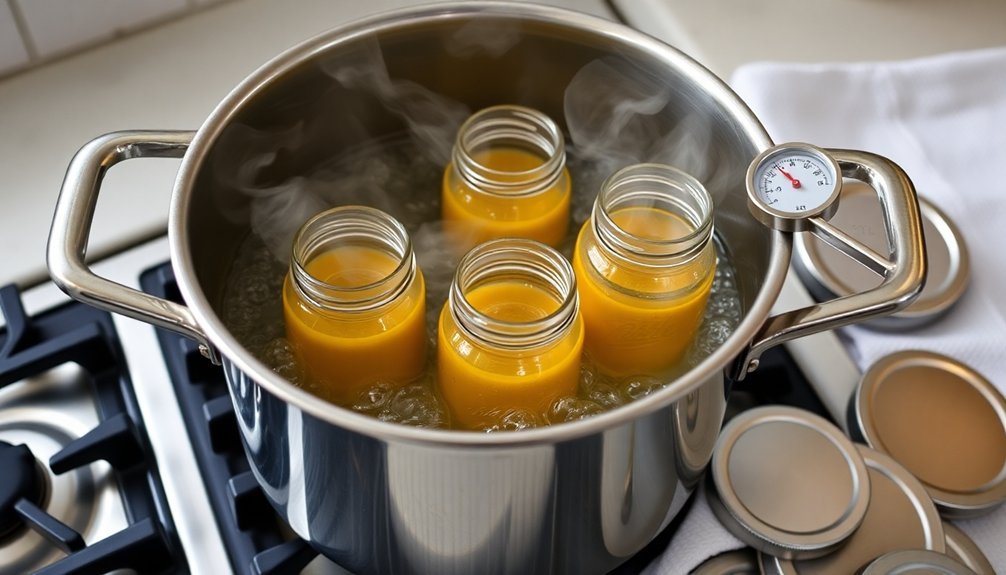
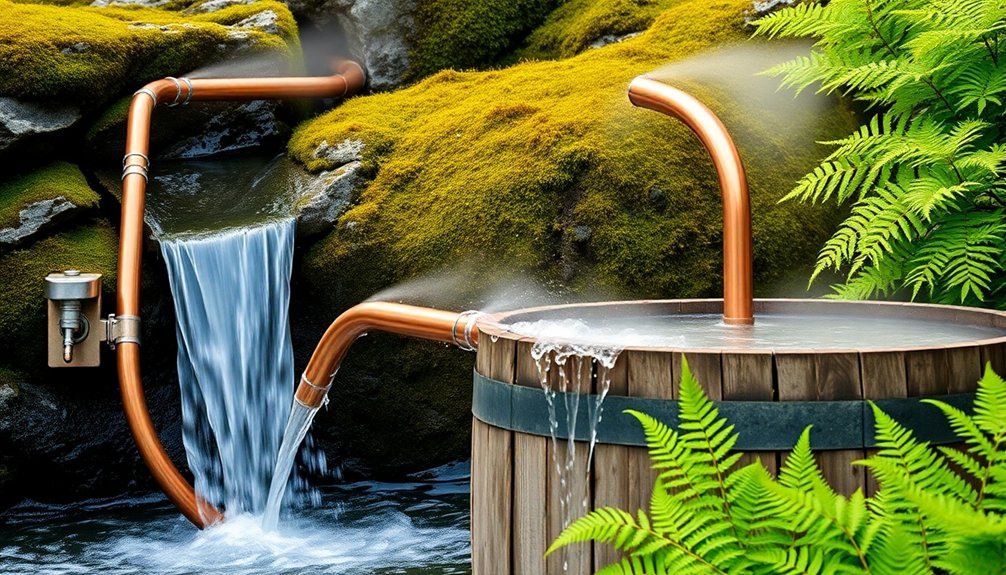
Leave a Reply